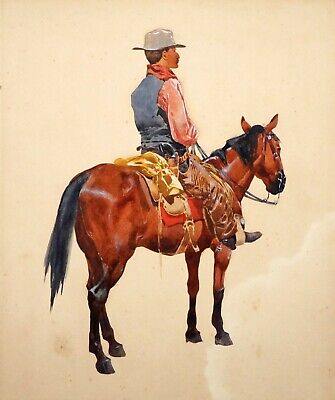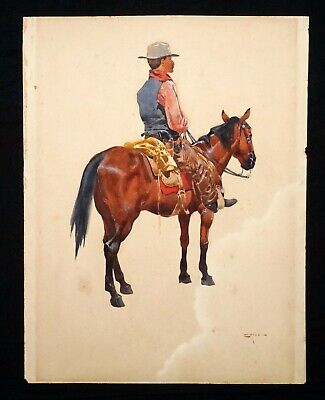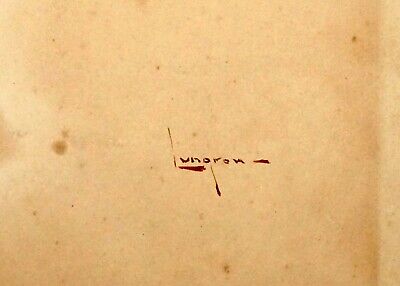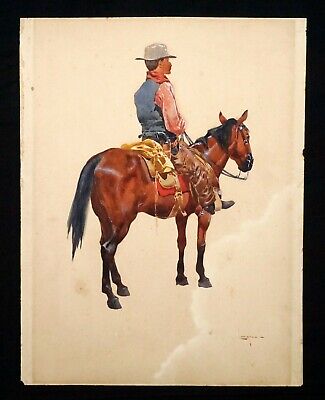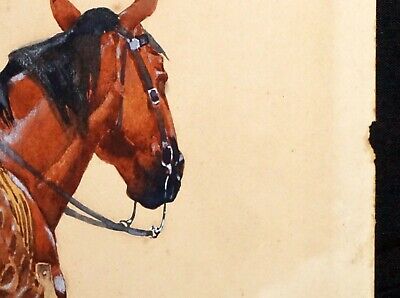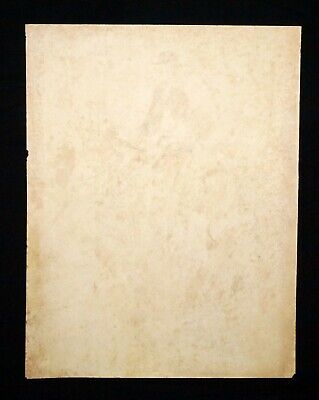Harnisch and Company
1900 S.W. US Gouache Painting Lone Rider by Fernand Lungren (1857-1932)(Jwo)
1900 S.W. US Gouache Painting Lone Rider by Fernand Lungren (1857-1932)(Jwo)
Couldn't load pickup availability
Share
Up for sale from a recent estate in Honolulu Hawaii this around 1900 South Western US original gouache painting on paper that is untitled depicting a lone cowboy rider on horse back that was created by the well known artist Fernand Lungren (1857-1932). The painting comes from a local Kamaaina estate and was in the family since the 1930s. It was recently inspected for conservation by a top notch company and was said to be able to be cleaned the toning and moisture stain for somewhere between $400 - $600. The condition is described above, please check the photos for more details. Free local pick up possible!!!
Measurements:
Sheet 14 inches x 11 inches
More about the artist:
Born in Hagerstown, Maryland, Fernand Lungren became a painter and illustrator of Southwest desert and Indian ceremonial scenes as well as desert landscape and Indians subjects of that time, especially ceremonies of the Navajo, Apaches, and Hopis. His best known painting is "Thirst", 1896, a dying man with a dead horse, and published in "Harper's Weekly," it attracted much attention nationwide.
He was raised in Toledo, Ohio and attended the University of Maryland but, not liking formal education, was influenced by artist Kenyon Cox to quit college to paint. He studied art in Cincinnati, in Philadelphia at the Pennsylvania Academy of the Fine Arts with Thomas Eakins, and in Paris at the Academy Julian.
At age 20, he became a magazine illustrator in New York City, working for "Scribner's Monthly," "Harper's," and "Century." His specialty was city streets and the lighting effects at night. He also studied in Paris at the Academy Julian and after that settled in Cincinnati where he met western painters Henry Farny and Joseph Sharp who encouraged him to paint in the West as they had done.
In 1892, hired by the Santa Fe Railroad, he went to New Mexico where he spent eight months in the Santa Fe area sketching at the nearby pueblos. In 1893, he went to Arizona and spent several months with the Hopis who made him a priest of a fraternity. When he returned to Cincinnati with paintings of the Southwest, viewers had little appreciation of the subject matter, and he did not receive recognition until much later.
In 1903, he moved to California, and for the remaining twenty-nine years of his life settled in Santa Barbara, where he helped found the Santa Barbara Art School and left much of his work to Santa Barbara State College.
Condition:
The painting is overall in good acceptable pre-owned condition, I had it inspected by a top notch paper conserver that said they will be able to clean the toning (100%) and moisture stain out (95%) I am happy to share their information with you,
